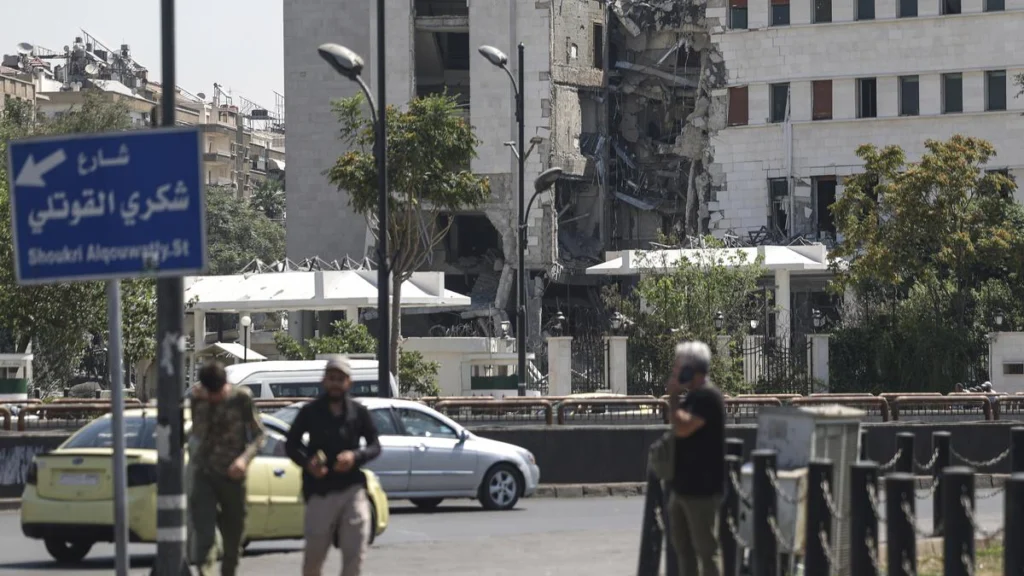Syrian government and Druze minority leaders announce a new ceasefire

The Syrian government and Druze leaders announced a new ceasefire after weeks of violence in southern Syria. The previous ceasefire, declared on July 15, collapsed quickly. The latest agreement aims to reduce hostilities but faces doubts from Druze leader Sheikh Hikmat Al-Hijri, who publicly rejected the deal.
Background of the Conflict
The Druze, a religious minority in Syria, have historically maintained a fragile relationship with the Syrian government. While some Druze have supported the regime, others have voiced concerns about the government’s treatment of their community. Recent clashes in southern Syria have intensified these tensions, especially in areas like Suwayda, Daraa, and Quneitra.
The government and Druze fighters have clashed over control of territory. The Druze community has demanded greater autonomy and respect for their rights, but the Syrian government has maintained tight control over the region.
Previous Ceasefire’s Collapse
The ceasefire announced on July 15 failed within days. Despite initial hopes, military operations continued, and both sides resumed fighting. Druze leaders, including Sheikh Hikmat Al-Hijri, criticized the government for violating the agreement. Al-Hijri’s disavowal of the ceasefire highlighted the lack of trust between the two sides.
The collapse of the ceasefire raised doubts about the possibility of long-lasting peace. Both the Syrian government and Druze leaders have called for better guarantees and stronger enforcement of agreements.
The New Ceasefire Agreement
The Syrian government and Druze leaders resumed negotiations after the collapse. The new agreement calls for an immediate halt to military operations and the establishment of a joint monitoring committee. However, the ceasefire remains fragile, with many Druze leaders, including Al-Hijri, expressing skepticism about its success.
The Syrian government pledged to honor the ceasefire, but concerns about the commitment of both sides remain. Druze leaders, particularly Al-Hijri, argue that the agreement must address their community’s political and cultural needs for it to be effective.
Sheikh Hikmat Al-Hijri’s Concerns
Al-Hijri, a respected figure among the Druze, voiced strong concerns about the new ceasefire. He demanded clearer commitments and enforcement mechanisms from the Syrian government. Al-Hijri rejected the previous ceasefire, citing violations by the regime. He has consistently called for greater autonomy for the Druze and better protections for their people.
Al-Hijri’s disavowal of the ceasefire demonstrates the ongoing mistrust between the Syrian regime and Druze leaders. He insists that the government must respect Druze rights before any meaningful peace can be achieved.
The Role of International Actors
The international community has called for a peaceful resolution to the conflict in southern Syria. The United Nations and neighboring countries have expressed support for the ceasefire, but their influence remains limited. Russia and Iran, major backers of the Syrian government, have also called for peace but maintain their support for the Assad regime.
The international community has limited power over Syria’s internal affairs. However, external pressure may help push both sides toward a more durable ceasefire. International actors can also provide humanitarian aid and support the rebuilding of the affected regions.
The Path Forward
The new ceasefire offers a glimmer of hope, but the road to lasting peace is unclear. Both sides must engage in serious dialogue and make concessions for the ceasefire to hold. The Syrian government must address the Druze community’s demands for autonomy and respect. The Druze must also trust the government’s commitment to their safety and rights.
The failure of the previous ceasefire showed the difficulty of implementing peace in a divided country. The international community can provide support, but the success of the ceasefire will ultimately depend on the willingness of both sides to negotiate in good faith.
Conclusion
The new ceasefire between the Syrian government and Druze leaders is an important but fragile step toward peace in southern Syria. While it offers a temporary respite, the challenges of building trust and addressing the Druze community’s grievances remain. The government must show that it is committed to respecting the rights and autonomy of the Druze if the ceasefire is to hold.
The road to lasting peace will require compromise from both sides. The international community must continue to support efforts to de-escalate the conflict, but the ultimate resolution lies in the hands of Syria’s government and Druze leaders. Only through dialogue and mutual respect can Syria hope to find a lasting peace.






